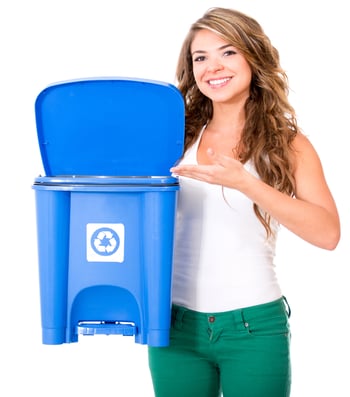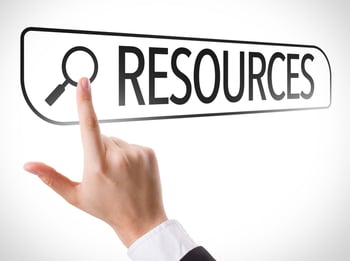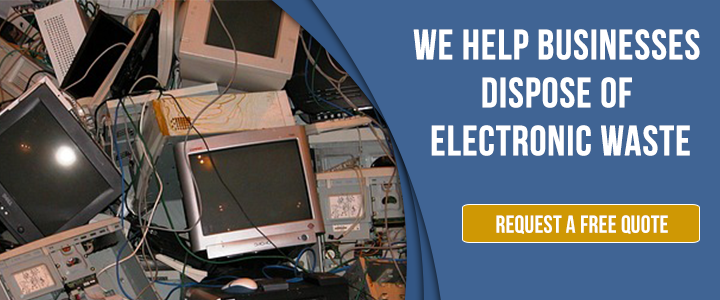Electronic waste is a mounting problem in California, across the nation and around the globe. Though increasing rules and regulations help ensure that e-waste is punished when discovered, it’s still a problem, mucking up our waterways and harming wildlife.
Responsible disposal of electronic waste is ever more important, both for our world and for your good name.
Why? Because improper electronic waste disposal can lead not only to large fines, but also to notoriety when large enough missteps occur. Even if the issue occurs totally by accident, such as a spill on the way to the recycling center or a mismanaged handoff, you can still take a major public image hit.
It’s also important to note that California e waste laws are more strict than at the federal level, which has no codified legislation on the matter. The state requires e-waste creators to understand which materials are recyclable and not to throw those components away. They also require adequate separation of materials and drop-off at appropriate facilities, which often only take some types of waste. Failing to adhere to these rules, even through ignorance, can lead to the same fines and optics problems as accidents.
Luckily, that’s not a foregone conclusion. By taking steps to dispose of electronic equipment responsibly, you can avoid such downsides. Here are three ways to get rid of electronic products the right way today.
1. Know What You Can And Can’t Throw Away
Shockingly, nearly 53.6 million metric tons of e-waste was generated worldwide in 2019, according to our latest roundup of electronic waste statistics. You might assume most of this comes from developing countries, and to a certain extent that’s true, but it’s not the whole answer. Even in the US, electronics such as computer monitors and cell phone parts are the fastest-growing segment entering the municipal waste stream.
generated worldwide in 2019, according to our latest roundup of electronic waste statistics. You might assume most of this comes from developing countries, and to a certain extent that’s true, but it’s not the whole answer. Even in the US, electronics such as computer monitors and cell phone parts are the fastest-growing segment entering the municipal waste stream.
One of the biggest problems e-waste creators experience is an inability to adequately answer the questions, “what is electronic waste?” To accurately dispose of e-waste and other hazardous waste, though, you need that answer. This includes knowing:
- What is safe to throw away yourself in a trash bin, such as old plastic parts, relatively inert metals (copper and gold) or other office waste that lacks hazardous waste or environmentally destructive materials
- Which materials are damaging to the environment (chemicals, heavy metals and lead, and carcinogens, to name a few)
- Where to take the materials that you can’t throw away yourself (and which facilities provide adequate protection to you, considering you’re liable)
For a more complete list of what you can and can’t recycle, check out our article E-Waste Disposal: What You Can And Cant Throw Away. It’s worth keeping in mind, however, that even some items that aren’t prohibited for trash are still valuable. Recycling them can protect the environment, reduce the mining of virgin resources and even save you money, done right.
2. Take A Closer Look At Your Electric Waste Management Systems
Your existing electronics device recycling systems are important, even if the most likely need updating. To maximize environmental protection, as well as safeguard your image and bottom line, it’s critical to perform an assessment of how you currently handle e-waste. Ask yourself the following questions:
- Do you have any procedures in place to ensure an efficient and safe disposal plan?
- How can you improve your e-waste disposal and reduce how much electronic waste you do generate?
- Do you face any current electronic waste disposal issues that make it difficult to ensure your practices are safe?
Your answer to the first question should be yes. As to the second, almost every company can stand to improve their systems. Concerning the third, the answer is probably also yes … and again, that could stand improvement. It’s likely time to look into better methods for electric waste management today.
3. Take Advantage Of Resources Available To You
Among the most common electronic waste disposal issues are problems such as:
problems such as:
- Not having a solid partnership with reliable, nearby electronics recyclers
- Having to make multiple trips throughout the week or month – or not having the time to do so, which allows waste to stack up (also illegal in many cases)
- Not understanding which materials are considered e-waste and which aren’t (as covered in No. 1, above)
- Taking your waste to facilities only to discover they don’t accept it, or that they only accept some of it
The good news is, by partnering with a reputable recycler, you can solve most, if not all, of these issues. A reputable materials disposal company will ensure that all of your waste gets where it needs to go, not just some of it. They’ll also follow every protocol outlined by the state of California, which you’re unlikely to stay abreast of as effectively. That leaves you free to focus on the work you do do, without having to designate resources outside your bailiwick.
Moreover, a professional recycler can help you streamline your own waste systems in-house, so that when you go to drop it off, it’s better organized and takes less time from you. Educating the members of your company on how to manage items that no longer have useful life is a great way to step up your game and step down the amount of space/time/effort they take up.
Lastly, partnering with knowledgeable electronic waste disposal companies will cover your proverbial butt, so you don’t have to worry about the worst happening. Accidents, issues and violations are far less likely to occur when you put your trust into the hands of someone who does it for a living. The safety provided by working with a company is more than worth it when you consider the potential downsides.


Comment